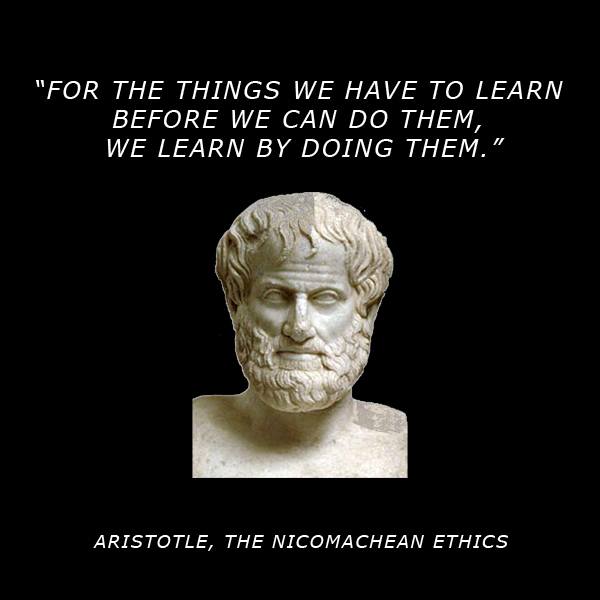The Importance of Experiential Learning for Children
What is experiential learning?
As the name suggests, experiential learning is the process of learning through experience. The theory was initially proposed by psychologist David Kolb who emphasized how experiences influence the learning process. Kolb defined experiential learning as "the process whereby knowledge is created through the transformation of experience. Knowledge results from the combinations of grasping and transforming the experience."
In his work, Kolb described two different ways of grasping experience:
He also identified two ways of transforming experience:
According to Kolb, concrete experience provides information that serves as a basis for reflection. From reflection, we assimilate the information we gathered through a concrete experience and develop new theories about the world which we then actively or reflectively experiment with. Kolb also noted that people who are considered "watchers" prefer reflective observation, while those who are "doers" are more likely to engage in active experimentation.
What is hands-on learning?
Hands-on learning is a form of education in which children learn by performing tasks. Instead of simply listening to a teacher or instructor , the student indulges in the subject matter to solve a problem or constructively create something.
A few examples might include:
- Solving problems as a part of math class
- Performing a lab experiment as a part of a science class
- Developing circuits or working models as a part of a tech class
- Recreating a historical document or artifact as a part of history class
- Composing a creative story, poem, or essay as a part of English class
Hands-on learning brings so many benefits to students, including:
- It is a more engaging way to learn
- It can lead to increased knowledge retention
- It offers practice in problem solving and critical thinking
- It often results in a physical recreation
- Experiential learning lays emphasis on holistic development.
- The role of the teacher is that of a facilitator.
- Experiential learning fosters the all round development of a child since it directly involves the students in the process of their own learning. From past knowledge to engagement in learning to exploring to the concluding result. It’s the journey of the child’s own learning.
- It engages the child creatively, critically , emotionally, intellectually, physically and socially.
- It helps the child in self exploration, to remain focused , learn faster , and builds long lasting memory.
- Experiential learning promotes integrated learning. One can integrate the experiences with math , art , science and learn many skills from one experiential learning.
- Experiential learning helps the kid to develop life skills, knowledge and new experiences.
- It aids knowledge-grasping ability.
LIST OF ACTIVITIES:
Following are classroom activities for better learning experiences.
- Field visit
- Engineering : making miniature models , bridges from strips , stones , hard board , straw etc.
- clay modeling
- Peer-Peer Learning
- Enhances critical thinking, independent research and skillful communication.
- Widens perspective.
- Provides an active environment
2. Role Play
- Activity allows interaction between the team members which results in better bonding between the students.
- Introvert students get a golden opportunity to express themselves
- Students attain public speaking skills
- Deep evaluation of the given topic
4. Peer Teaching
- Instills basic teaching skills in students
- Showcases creativity of the student in teaching
- Boost in confidence.
5. Case study
Case studies are exciting activities. Real-life stories are described to integrate with classroom knowledge. Life outside the class room is evaluated.
- Students are made familiar with the world outside.
- A comparison of what has been studied with real life experience is of great worth
6. Problem – Based Learning
A problem is presented to a group in the class based on an authentic situation that the participants may encounter. The presented problem is evaluated and the most effective solution is achieved.
- Students learns to deal with problems in life confidently
- Different perspectives of solving a problem makes them wise
7. Concept Drawing
Benefits – It nurtures the creative aspect of a child. And also this will help students to focus and compile the information through drawing.
8. Architectural Activity
Benefits – this activity aids critical thinking, decision making, planning designing, collection and compilation of information, the importance of the environment and its resources, innovative ideas, patience and concentration.
9. Advertisement Activity
Benefits – It helps them to think creatively and innovate new ideas to sell their products. They even develop good team working skills, communication, planning, implementation.
10. Junk Art
Benefits - It adds creative aspect to the overall development of a child.
All the above experiential learning activities definitely aid holistic development of children.
Why Isn't Experiential Learning Used More Often in Schools?
Traditional training methods have been used for decades and have been proven as constant and dependable. Since these approaches are more familiar, and often affordable, it’s easy to gain buy-in from executives , participants and stakeholders. Once materials or curriculum have been developed, traditional training is relatively economical and the execution is hassle-free.




Comments
Post a Comment